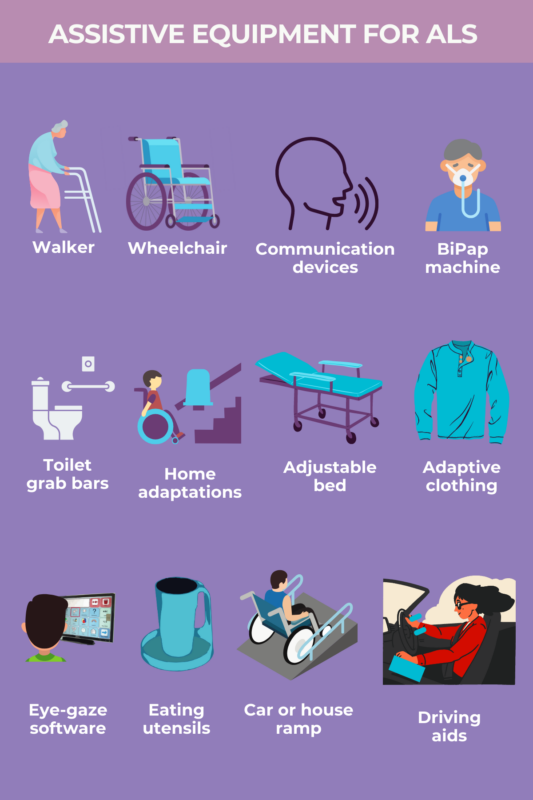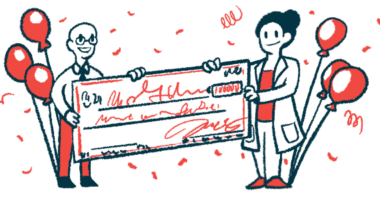FAQs about ALS aids and adaptations
Using adaptive equipment puts less strain on progressively weaker muscles of a person living with amyotrophic lateral sclerosis (ALS). For example, using a cane, walker, rollator or wheelchair lessens pain on leg muscles. Pain and discomfort in upper limbs can be reduced by using adaptive equipment for eating, driving, and home assistance devices to control the temperature, music, or door openings. Pain management for ALS is typically based on a combination of approaches that include physical therapy, massage, and medications.
Mild impairment in walking can be managed with the use of a cane or hiking sticks, for a person with amyotrophic lateral sclerosis (ALS). As the disease progresses and muscles become weaker, a person with ALS may need a walker, rollator, or a manual or power wheelchair.
Adaptive equipment for breathing can help prolong life expectancy for a person with amyotrophic lateral sclerosis (ALS). Respiratory aids can be noninvasive, such as a BiPap machine, cough assist units, and suction devices, or invasive, including a surgical tracheostomy and mechanical ventilation. Elevating the head of the bed can also assist in breathing, especially during sleep.
As long as it is safe to do so, a person with amyotrophic lateral sclerosis (ALS) can drive. Regular evaluations of the skills needed for driving, including muscular control, reflex, vision, hearing and cognitive ability should be done by an occupational therapist and other members of the healthcare team. Hand controls can be added to a car, and some people may be able to purchase a wheelchair van. After a person with ALS cannot drive any longer, there are other options for transport, such as charitable organizations, accessible transit, taxis, and ride shares.
Gentle stretching such as yoga, swimming, recumbent biking, walking, light-to-moderate resistance training, and weight lifting are suitable for a person with amyotrophic lateral sclerosis (ALS). An exercise program should be set up for the individual’s needs and monitored by a physical therapist familiar with working with people with ALS.
Related Articles

 Fact-checked by
Fact-checked by 








